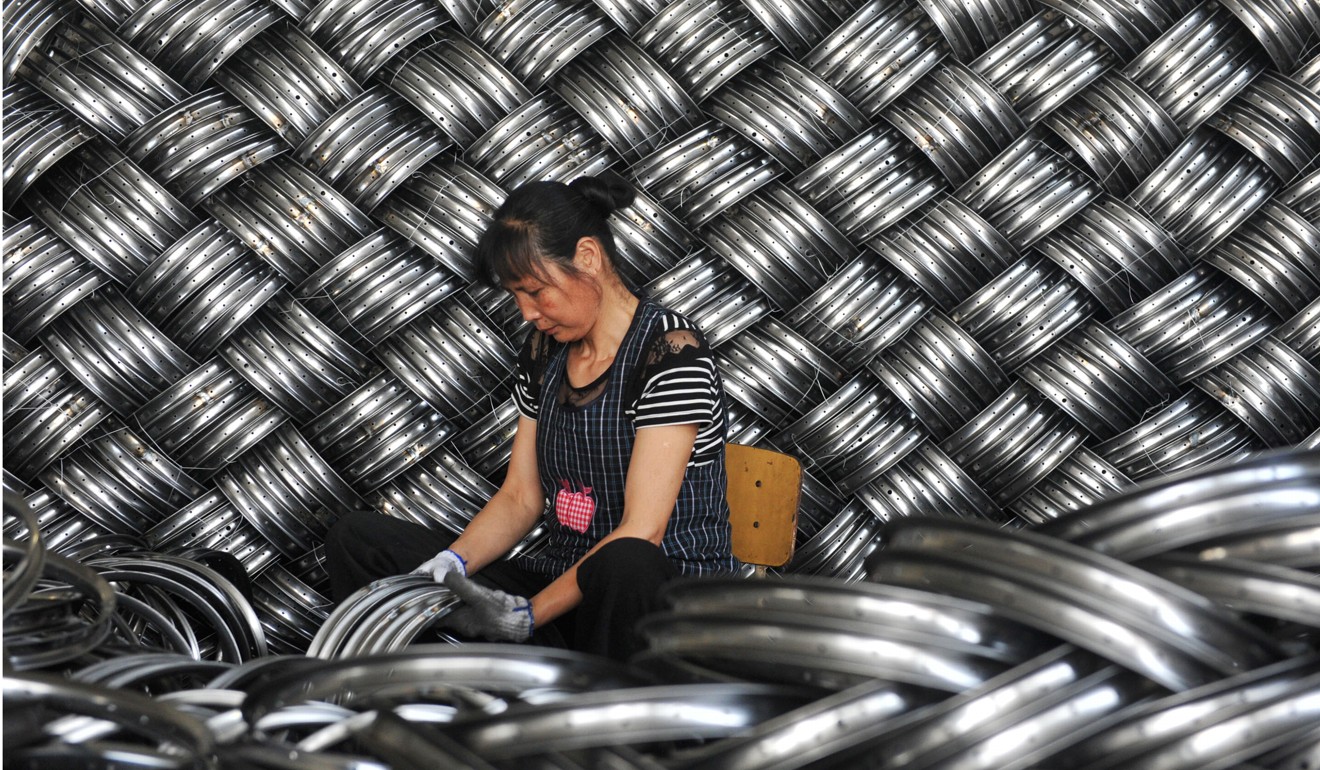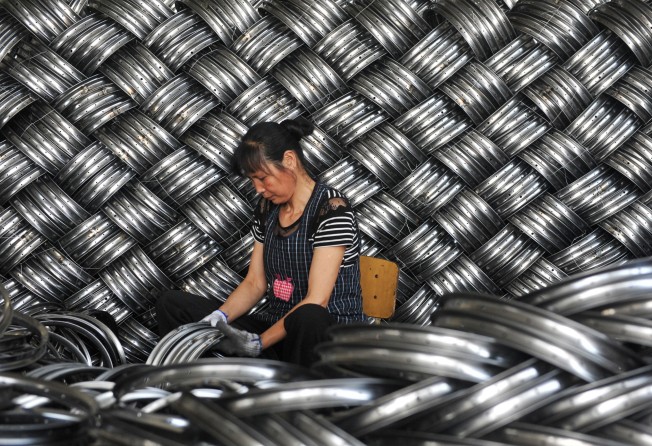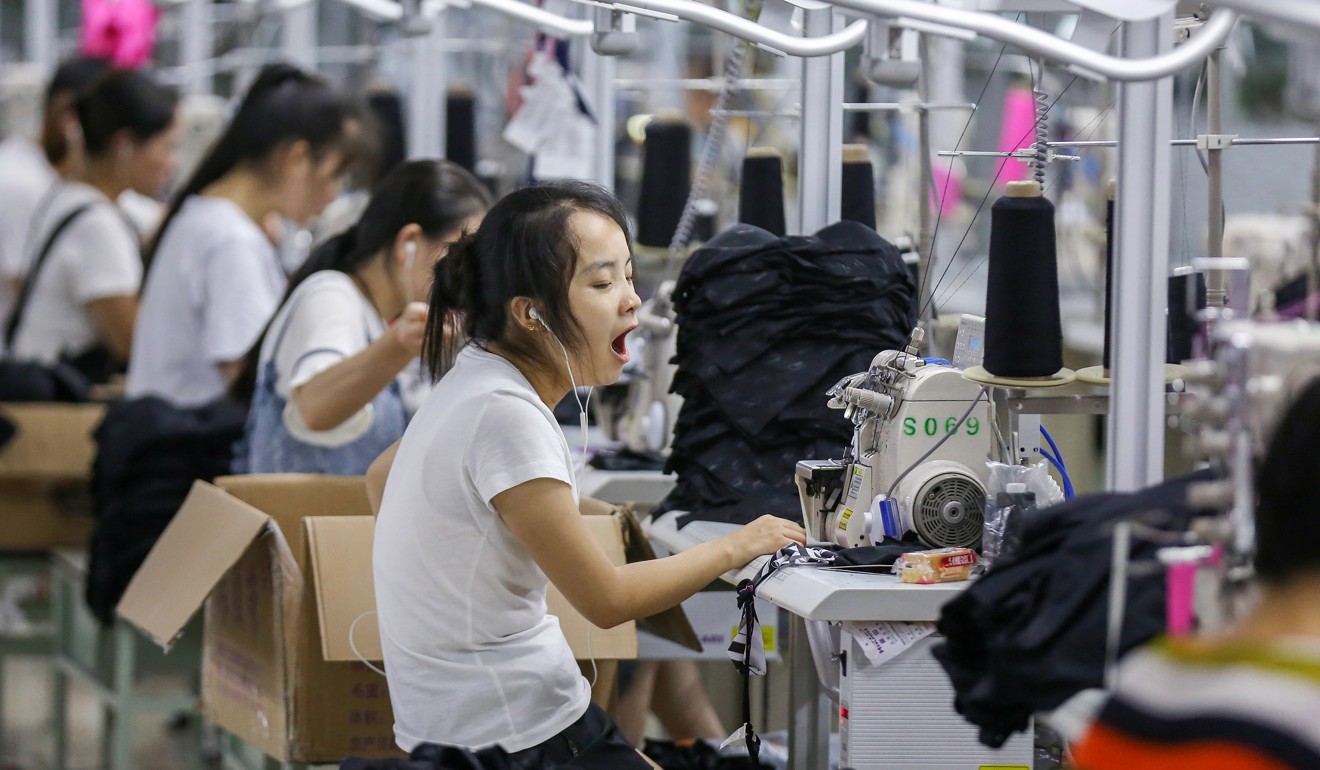
Which economy, estimated at US$28 trillion, is bigger than the US or China? It’s women
- Survey reveals 97 per cent of businesses in China employ at least one woman in senior management, higher than the global average of 87 per cent
- China should encourage more women to participate in the booming in the e-commerce and technology sectors and into leadership positions, say analysts

Narrowing the gender gap in the workplace could boost global gross domestic product by 31 per cent or US$28 trillion, the size of the US and China GDP combined, according to a report by BofA Merrill Lynch.
But the current pace at which the gap is reducing, it will take 202 years to close the gap. And analysts say that there is still a long way to go to advance gender equality in the workplace as millions celebrate International Women’s Day on Friday.
By 2020 women are expected to hold US$72 trillion of the world’s financial assets, twice the 2010 level and are accumulating assets 1.5 times faster than men.
In Asia, women account for around 50 per cent of the region’s population and 36 per cent of GDP, but just 12 per cent of board seats and 3 per cent of CEO positions, showed a report released by McKinsey last year.
And in China, women contribute an above-average 41 per cent to GDP.

According to BofA Merrill Lynch, Asian boards’ lack of gender diversity is most acute in information technology, industrials and consumer discretionary. In contrast, nearly half of real estate investment trusts, telecoms and financial companies in Asia have at least two female directors.
Currently, 97 per cent of businesses in China, up from 88 per cent in 2018, employ at least one woman in senior management, higher than the global average of 87 per cent, according to Grant Thornton Hong Kong.
“External factors such as increasing organisational transparency, gender pay gap reporting and recent vibes and campaigns on social media appear to be rousing businesses to make the change that they needed,” said Mabel Chan, deputy managing partner at Grant Thornton Hong Kong. “However, globally the proportion of women in senior roles is still short of the 30 per cent tipping point that is expected to open the gates to gender parity.”
Analysts pointed out that the rising number of women in the workforce and leadership roles in China will continue to increase their financial responsibilities at home.
“The new second-child policy indicates that Chinese women – especially moms – will take on more financial responsibilities in the household,” said Neil Wang, Greater China president of Frost & Sullivan.

Chinese couples can now have two children after rules were relaxed from the one-child policy that was in force from 1979 to 2016.
However, some analysts pointed out that the time that Chinese women spend on unpaid care work is likely to increase as a result of the two-child policy.
Analysts also said that to speed up the time to narrow China’s gender gap in the workplace, China can build on its emerging strength in women’s entrepreneurship in the e-commerce and technology sectors to continue to encourage more women into professional and technical fields and into leadership positions.
Market research firm Mintel Group pointed out that the number of women in enterprise is growing, thanks to the booming e-commerce industry in the country, giving them financial independence.
According to Alina Ma, associate director of research at Mintel, 40 per cent of female students run their own online store on Taobao and 39 per cent make money from their hobbies respectively. She also said that young mums between the ages of 23 to 29 are more likely to be self-employed than women in their 30s.
“This means that younger women have a better chance to pursue what they are interested in and earn money from their hobbies,” Ma said.